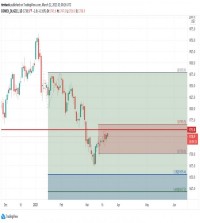|
Opalesque Industry Update - Towers Watson’s institutional investment clients globally allocated over $8bn to smart beta strategies during 2014, bringing the total exposure to around $40bn (in 550 portfolios) in these strategies, across a range of asset classes. This compares to its clients having a $32bn exposure to smart beta strategies at the end of 2013 and $20bn in 2012, according to the company’s global investment manager selection data. Luba Nikulina, global head of manager research at Towers Watson, said: “Interest in thinking smartly about betas within portfolios remains high but there is a considerable degree of caution about the proliferation of products labelled “smart beta”. We believe smart betas should be easy to describe and understand, which many of these labelled products are not, as often they are poorly implemented and seem naïve about the inherent risks. While growth has been phenomenal in the past five years, we expect to see continuing demand, especially for smart implementation and innovation which define the top managers in this space.” The data also shows that last year Towers Watson’s clients – which include pension funds, sovereign wealth funds, endowments and foundations and insurance companies – carried out diversifying strategies[1] selections worth $10bn, up from $7bn in 2010. Among diversifying strategies during 2014, real estate attracted the most interest (over $3bn compared to $1.6bn in 2010), where one tenth is in smart beta, followed by infrastructure ($2.3bn compared to $59 million in 2010), where one third is in smart beta. In the same period, liquid diversifying strategies attracted $1.7bn, of which more than a third is in smart beta. Luba Nikulina said: “We encourage our clients to increase diversity in their portfolios and think about diversifying solutions holistically in the context of all return drivers. However, increasing diversity only works well if accompanied with the right level of governance that can identify skilled asset management and ensure cost control, both of which are crucial for achieving successful outcomes.” According to the data, credit selections by Towers Watson’s clients in 2014 totalled $34.8bn ($19.3bn in 2010), of which the majority were invested in global bond mandates ($12bn compared to $5bn in 2010) followed by US mandates ($7.3bn compared to $3.5bn in 2010) and Australian bonds ($3.4bn compared to $2.3bn in 2010). In 2014, $4.5bn was invested in developed markets alternative credit mandates and $0.4bn in direct lending and structured credit opportunities. During the year $1.5bn was invested in smart beta in the bond area compared with $0.5bn in 2010. Luba Nikulina said: “Most investors in credit want to capture beta efficiently and improve implementation of thematic and tactical views through opportunities such as alternative credit and direct lending. This allows them to broaden their exposure to the illiquidity and skill premia and improve credit portfolio effectiveness. Perhaps unsurprisingly, smart beta innovation in the bonds space has been slower than in equities, partly due to the nature of the indices and the level of complexity which comes with the territory; but this is changing and we think that there is more to do in bonds. In terms of smart beta, bonds are where equities were five years ago.” Within equities, global mandates, totalling around $7bn, continued to be the most popular with Towers Watson's clients in 2014 ($4.5bn in 2010), followed by US equity ($3bn and the same in 2010), US small / mid cap equity mandates ($2bn compared with $1.5bn in 2010). During the year emerging market equities attracted $1.8bn ($3.2bn in 2010) while $1bn was invested in Global ex US equities (compared to $1.6bn in 2010). The company’s clients invested $0.5bn in long-short equity in 2014 as compared to $0.2bn in 2010. After significant capital deployment in private equity in 2013, Towers Watson’s clients favoured more niche illiquid strategies to more a traditional buyout approach, and as a result, private equity attracted fewer assets than in previous years ($415 million compared to $714 million in 2010). In total, equity mandate selections in 2014 accounted for $20.3bn in assets (compared to $20.6bn in 2010) where smart beta accounts for $1bn, compared with $45 million in 2010. Luba Nikulina said: “The negative sentiment towards active management may be somewhat overblown now. We believe in good active management - a combination of highly skilled well-aligned investment teams and complete fee transparency - but acknowledge that it is just very difficult to find. If investors’ governance levels are appropriate and they believe they are able to identify skill, now is actually a good time to be looking for alpha given increasing market volatility and the lack of clear beta opportunities. Somewhat ironically, smart beta has sharpened and refined active management to be truer than it used to be.”
Investment manager selection activity globally at Towers Watson exceeded 880 selections in 2014, reflecting around US$72bn of assets moved for over 300 clients. This compares to assets moved of around US$57bn, for around 790 selections, in 2010. |
Industry Updates
Towers Watson clients double smart beta strategies to $40bn
Monday, February 16, 2015
|
|





 RSS
RSS







